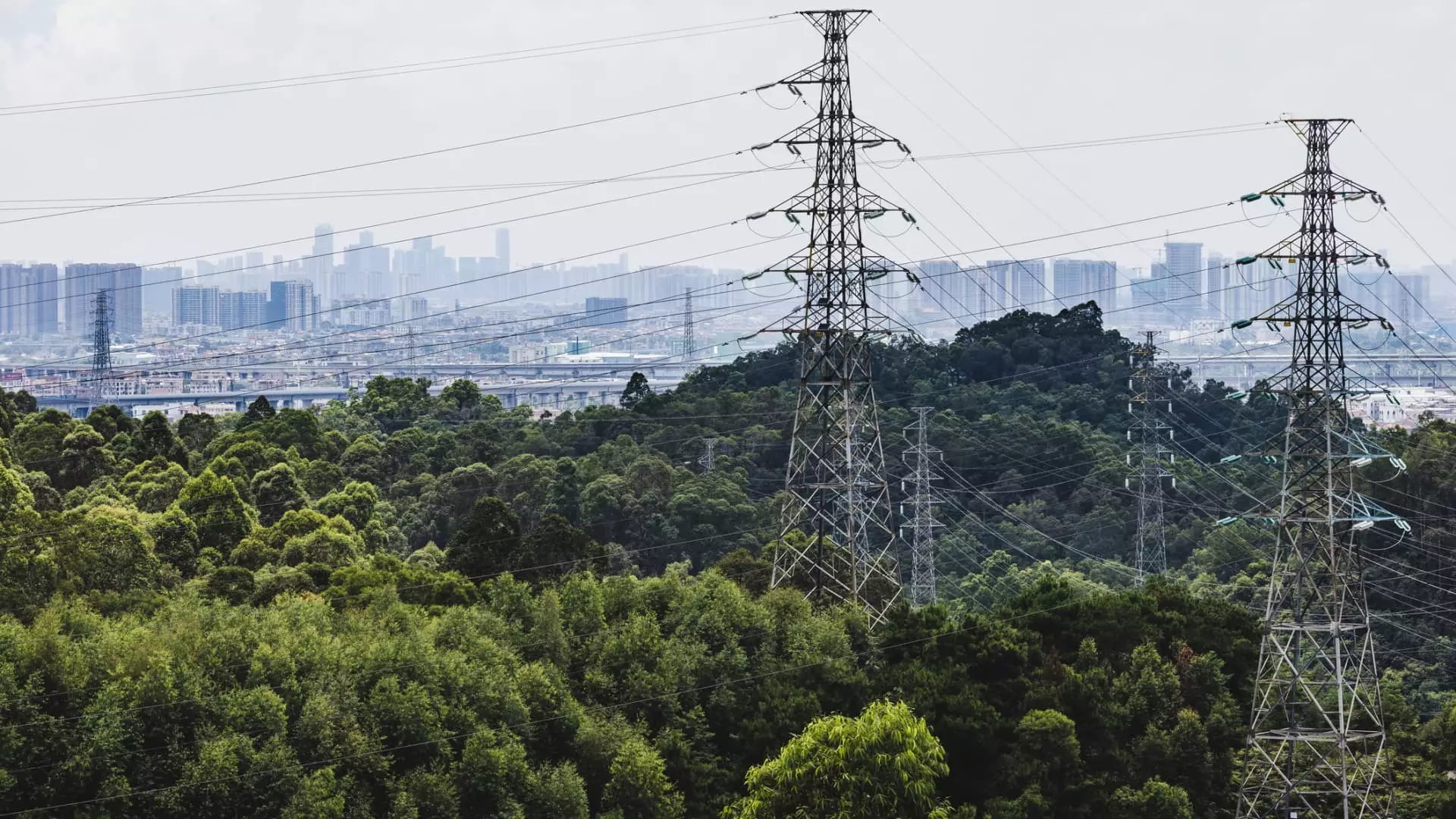In an era where inflation appears to be stabilizing, one glaring economic issue has emerged as an unwelcome exception: skyrocketing electricity prices. According to the consumer price index for May 2025, electricity costs have surged by 4.5% over the past year. This alarming figure is nearly double the overall inflation rate for goods and services. For more than 130 million households across the United States, this trend spells financial strain, exacerbating an already fragile domestic economy.
The U.S. Energy Information Administration (EIA) has laid bare predictions that electric prices will outpace inflation until at least 2026, showcasing a worrying trajectory that has already been unfolding since 2022. David Hill, an executive vice president at the Bipartisan Policy Center, succinctly summarizes this predicament: “It’s a simple story of supply and demand.” While ostensibly straightforward, the implications of this imbalance are anything but simple, particularly given the multitude of intertwined factors at play.
The Mechanism Behind the Surge
Electricity pricing is not merely a product of market fluctuations; it is deeply rooted in a complex web of demand growth that far outstrips our current supply capabilities. Nationwide, the demand for electricity has grown due to the proliferation of smart home devices, electric vehicles, and other electronic amenities. The ultimate irony here is that while we strive towards a more sustainable energy future, we simultaneously face unprecedented power demands that place further strain on our aging electric infrastructure.
Consumer spending on electricity reached an average of $1,760 in 2023. That figure varies considerably, as some households in regions like Hawaii are paying eye-popping rates of up to 41 cents per kilowatt-hour. Joe Seydl, a senior economist at J.P. Morgan, points out that the shocking regional discrepancies reflect a critical point: electricity pricing is dictated by local infrastructure and not by global oil prices. As the Pacific, Middle Atlantic, and New England regions face significant price hikes—potentially exceeding the national average—the economic pressure on families in these locales will only intensify.
The Role of Data Centers
One might ask what is causing this avalanche of demand, and the answer lies, in part, with data centers. These colossal entities, which house immense servers for cloud computing and AI applications, are voracious consumers of electricity. Over the last decade, energy consumption by data centers tripled, and predictions suggest this figure could double or even triple again by 2028. What this means is that electricity demand from these facilities alone may outstrip the energy consumed by manufacturing sectors that include steel, aluminum, and chemical production by 2030. Here lies a paradox: as we push towards a digital transformation, we are confronted with the reality that our energy infrastructure is not keeping pace.
Jennifer Curran, a senior vice president at the Midcontinent Independent System Operator, notes this paradox, adding that the demand growth is “unexpected.” In a time when we are overwhelmingly invested in developing green technologies, we must consider the ramifications of increased electrification on our already strained power grid.
The Aging Infrastructure Dilemma
As electricity demand escalates, the problems within the U.S. electrical infrastructure become increasingly evident. An aging grid is unable to support the rising energy needs of the population and businesses alike. According to Michael Cembalest from J.P. Morgan, the expansion of transmission lines has stagnated and falls well short of government targets set for 2030. Transformer shortages—the equipment responsible for managing voltage across the grid—only add fuel to the fire of rising prices. Currently, half of all transformers are nearing the end of their useful life and need urgent replacement.
Additionally, the high inflation rates observed in manufacturing have made it costlier to both maintain existing infrastructure and develop new capacity. The very equipment that is essential to the functioning of our electric grid is becoming increasingly rare and expensive to procure. As we clamp down on fossil fuels to curb greenhouse gases, the transition appears fraught with complications that could compromise both our environmental goals and our economic stability.
The Broader Consequences
Ultimately, rising electricity prices are far more than an inconvenience; they signal fundamental challenges rooted in our energy policies and infrastructure investing. It reflects a conflict between our aspirations for a green energy economy and the realities of today’s electrical landscape. With each passing year, U.S. households are feeling the financial pinch more acutely, a trend that presents not just a monetary burden but broader implications for overall household welfare and lifestyle choices.
The pivot towards a sustainable energy future demands actionable strategies, such as significant upgrades to infrastructure and improved efficiencies in energy production. However, without coordinated efforts across sectors and adequate policy support, we risk entrenching a cycle of rising energy costs that imperils not only American households but the economy as a whole.

